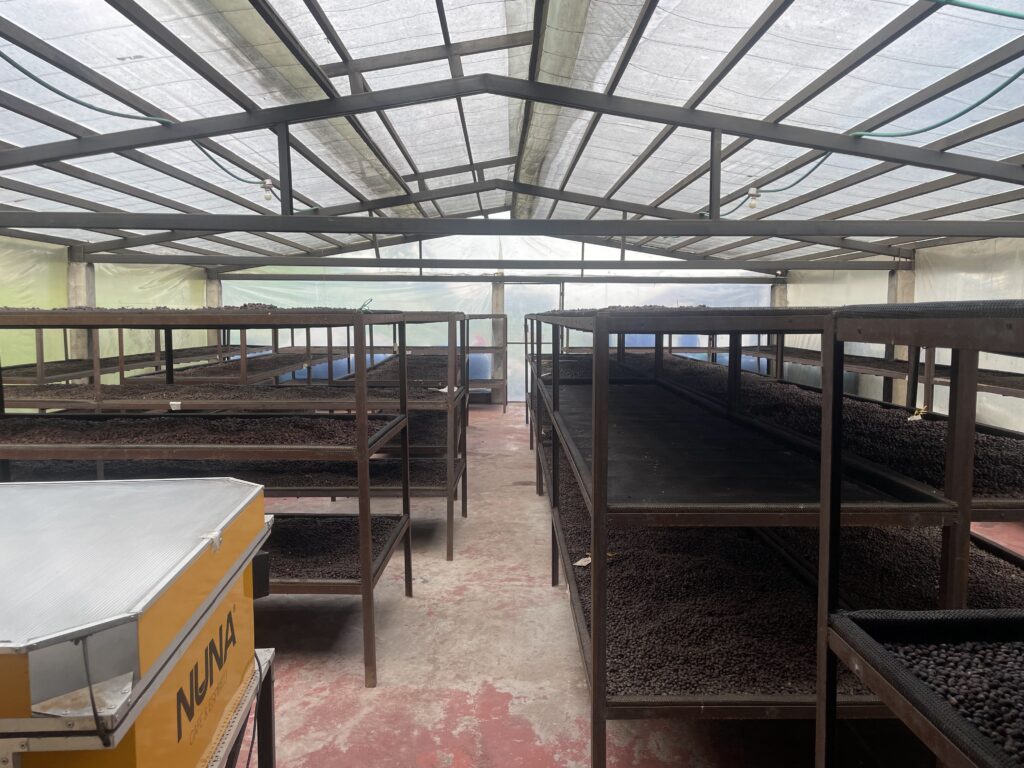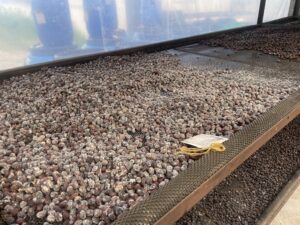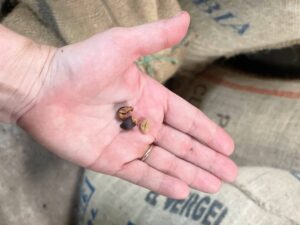So. You opened your Doorstep Barista box and have a couple new beans to choose from. You carefully compare tasting notes and origin, descriptions and…processing methods? What are those??
Processing is everything that happens to the bean in the time between harvesting and being shipped off to roasteries. Previously, we covered the three basic types of processing methods—washed, natural, and honey—which you can find here (we reference it, so it’s worth a quick read if you don’t already know). This month, we turn to experimental processing methods, which are relatively new and uncommon processing methods in the specialty coffee industry.

Something else to clarify: the following experimental processing methods can generally be considered “add-ons” to the basic processing methods (those being washed, natural, and honey). For example, “lacto-fermentation” isn’t a process in and of itself, but something used in conjunction with a washed, natural, honey process. So, while it’s not entirely accurate to call them “processes,” the term is used nonetheless since these procedures occur simultaneously.
And now what we all came here for:
1. Anaerobic Fermentation
This first one crops up frequently. “Anaerobic” means “without oxygen”; in the coffee processing world, it’s when the coffee bean is fermented in an environment without oxygen. This can occur at any stage during processing, and involves placing beans in sealed barrels with one-way valves. As the fermentation gasses build up, they push oxygen out of the barrel and through the valve, creating an anaerobic environment, and allowing fermentation to occur at a slower pace. The result often depends on if a washed, natural, or honey processed bean is being used, but generally, anaerobic fermentation creates a heavy body with winey or fruit tasting notes.
2. Thermo-Shock
Thermo-shock is a procedure where beans are cycled through dramatic temperature changes at any stage of processing. Temperatures can drop as low as -50°C to -80°C, then swing rapidly to temperatures as high as 30°C to 60°C. This is achieved with dry ice, liquid nitrogen, or cold/hot washing, and results in a more nuanced taste profile.
3. Double and Triple Fermentation
As the name suggests, this is when the bean undergoes two or three rounds of fermentation at different stages of processing. Originating in Kenya as a means of simply storing coffee beans in water until enough space is available to spread them out and dry, it soon became a valuable addition to processing as a means of developing flavour profiles. Often fermentation will occur the first time when the coffee cherry is depulped, and then again when the mucilage is removed. After the second period of fermentation, the bean is washed and, in the case of triple fermentation, this is when the bean is once again fermented.

4. Lacto-Fermentation/Lactic Process
This fermentation process utilizes the specific bacteria called lactobacillus. Coffee cherries are placed in an anaerobic container to ferment, and the pH levels, oxygen levels, and temperature are all closely monitored to ensure the ideal growing environment for lactobacillus. The cherries most often used for this are ones with a high Brix (measurement of sugar content) degree and pH readings, as these help with the fermentation. It is an 80-hour process, minimum. After fermentation, cherries are washed to remove mucilage, then dried. The result is usually a coffee with medium to high body, and increased sweetness.
5. Co-Fermentation
This is a slightly controversial method within the specialty coffee industry. Some people understand this method to be adding ingredients during fermentation or drying in order to flavour the coffee. So, how can you truly taste the bean itself if it’s masked by added flavours? In reality, co-fermentation is the addition of ingredients to create a specific bacterial culture for fermentation, either before or during fermentation. Depending on the ingredients’ pH levels and sugar content, different bacterial cultures are created, which affect how the bean ferments and its flavours develop. Co-fermentation is not the same as infused or flavoured coffee.
6. Carbonic Maceration
Here we arrive at our final processing method: carbonic maceration, a technique borrowed from wine making. It’s another anaerobic fermentation, but specifically uses carbon dioxide. When the coffee cherries are placed in fermentation tanks and sealed, CO2 is pumped into the tank, pushing the oxygen out. The presence of CO2 reduces the oxidation of fruit that can occur in open-air fermentation, and utilizes a different metabolic force than other fermentation processes to soften the tissue of the coffee cherry.
Many of these experimental methods produce coffees that have complex, funky, and unconventional flavour profiles, making them highly sought after in the specialty coffee industry. But, the increased complexity of these methods also increases the risk a batch spoiling. Furthermore, producers are required to have specific and expensive equipment; an extensive knowledge of each variable; and have a desired outcome in mind—meaning producers need to have the means to cup their coffees, when, in fact, most never taste their own coffee. Labour costs for extended processing and closer monitoring also increase. Ultimately, the cost, risk, and knowledge factors decrease the accessibility and desirability of these methods for producers.
More and more experimental processes continue to develop and gain popularity. This is by no means an exhaustive list, but hopefully we’ve provided a solid foundation to understand what it means when beans are “processed” and how it can affect flavour profiles.
Here, our two-part series concludes—thanks for sticking around!







